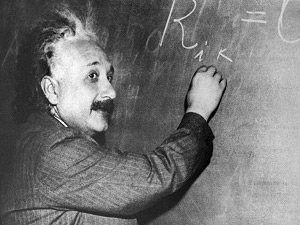Where more is relatively less

"[B]ecause people generally judge their fortunes not in absolute terms, but by comparing themselves to others, the super-success of the top 1% can make Mr. and Mrs. Median feel relatively poorer. Take CEOs--the $19 million that Wal-Mart Chief Lee Scott raked in last year was 410 times what Mr. and Mrs. Median made, as opposed to the $469,000 a year earned by Exxon's Ken Jamieson in 1975, which was a mere 40 times more."
And more from The Average American: 1967 And Today:
As the U.S. population crossed the 300 million mark sometime around 7:46 a.m. Tuesday (according to the U.S. Census Bureau), the typical family is doing a whole lot better than their grandparents were in 1967, the year the population first surpassed 200 million.
Mr. and Mrs. Median's $46,326 in annual income is 32% more than their mid-'60s counterparts, even when adjusted for inflation, and 13% more than those at the median in the economic boom year of 1985. And thanks to ballooning real estate values, median household net worth has increased even faster. The typical American household has a net worth of $465,970, up 83% from 1965, 60% from 1985 and 35% from 1995.
Throw in the low inflation of the past 20 years, a deregulated airline industry that's made travel much cheaper, plus technological progress that's provided the middle class with not only better cars and televisions, but every gadget from DVD players to iPods, all at lower and lower prices, and it's obvious that Mr. and Mrs. Median are living the life of Riley compared to their parents and grandparents.
[D]espite their material prosperity, the Medians are a grumpy lot. A Parade Magazine survey (a good source for all things median) performed by Mark Clements Research in April showed that 48% of Americans believe they're worse off than their parents were. A June 2006 study by GFK-Roper group showed that 66% of Americans said that their personal situations in the "Good Old Days"--defined by the bulk of respondents as anywhere between the 1950s and the 1980s--were better than they are today. And in May, a Pew Research Center poll showed that half of U.S. adults believe the current trends point toward their children's future being worse than their own present.
Attribute some of the dissatisfaction to what economist Milton Friedman dubbed "Permanent Income Theory," which assumes that people measure where they are relative to where they expected to be a few years ago. They don't care a bit what the average income was four decades ago.
"If you expect a 3% rise in income and you get 2.5%, you're disappointed," says Ken Goldstein, an economist at the Conference Board, a private research group in New York.
Those who worshipped Joe Namath in the 1960s could at least identify with the $142,000 a year he made ($848,000 in today's dollars). But how many can identify with the $87 million Tiger Woods took in last year? And not only are the elite making much more today, relatively, than the Medians, the rise of cable television and the Internet assures that they know all about it.
It's true that the wealthy have grabbed up a larger share of the growing economic pie over the past 40 years. Census Bureau stats show that the percentage of pay collected by the middle 60% of wage earners dipped to 46% in 2005 from 52% in both 1965 and 1975. That figure doesn't include income from investments, which would make the gap even larger.
But the overall pie is much larger too. A near quadrupling of the Gross Domestic Product since 1967 means that today's Americans share $12.5 trillion in wealth, or $41,579 per capita, compared to the $3.8 trillion, or $18,951 per capita, enjoyed by 200 million people back then.
Of course, the super-rich have done even better. When the first edition of the Forbes 400 hit newsstands in 1982, the top-ranked person was shipping magnate Daniel Ludwig, with an estimated net worth of $2 billion. That was about 20,000 times the net worth of Mr. and Mrs. Median at the time. There were only 12 billionaires on the list that year.
The top person on the 2006 edition of the Forbes 400, Microsoft (nasdaq: MSFT - news - people ) Co-Founder Bill Gates, had a net worth of $53 billion, or 133,741 times the Medians. That means that while Mr. and Mrs. Median have seen their net worth rise 130% percent since the first Forbes 400, the richest man in the country is worth 1,225% more. Oh, and every member of the list is now a billionaire.
Update 19 Oct: Barry Ritholtz points out some specific data points relative to the Forbes article, and I thought this was particularly noteworthy:
Personal Savings Rate
1965 8.5%
1975 10.5%
1985 11%
1995 5%
2005 -0.4%

0 Comments:
Post a Comment
<< Home